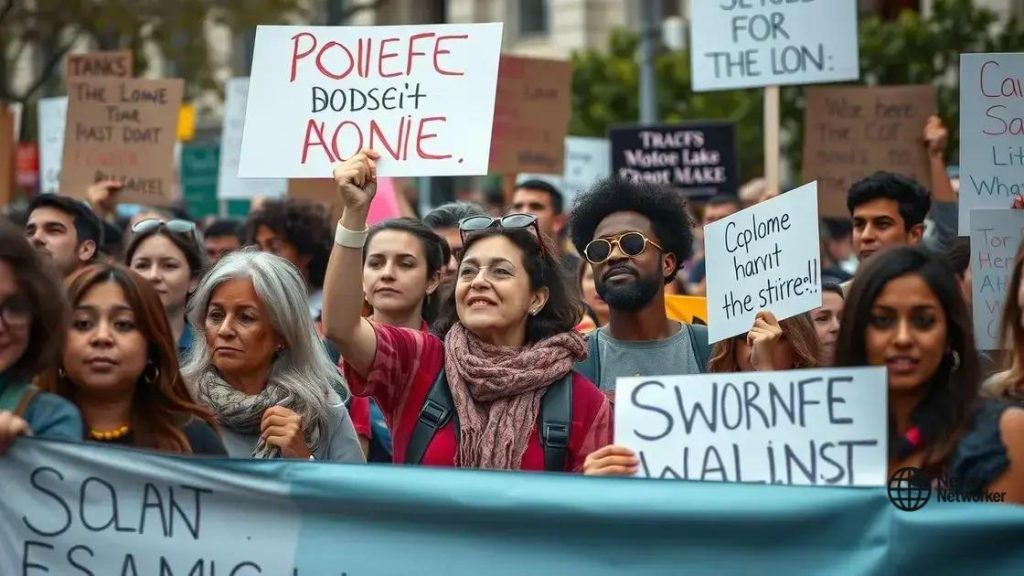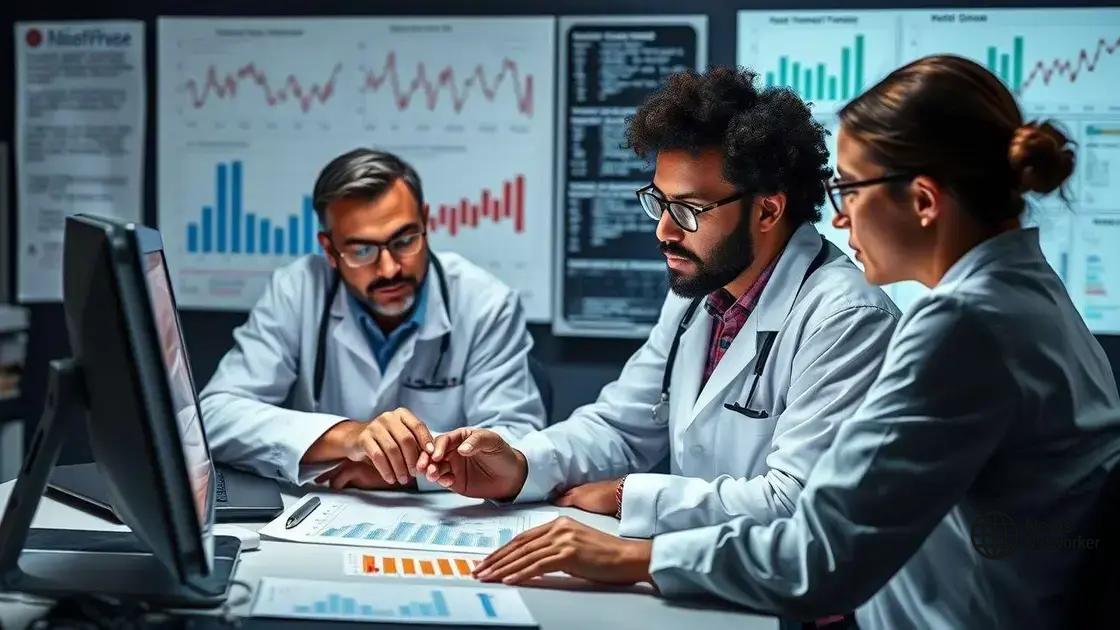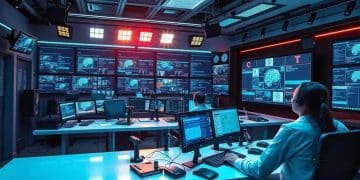Monitoring bias in protest media coverage: what to know

Monitoring bias in protest media coverage involves understanding how different news outlets portray events, influencing public perception through selective framing, language use, and source choice.
Monitoring bias in protest media coverage offers a critical lens to examine how events are reported. Have you ever wondered why some protests seem to dominate headlines while others are overlooked? This article dives into the nuances of media coverage.
Understanding media bias in protest coverage
Understanding media bias in protest coverage is essential for readers who want to grasp how events are reported. Different media outlets may choose to highlight certain aspects of protests, which can alter public perception significantly.
What is Media Bias?
Media bias refers to the perceived or real bias of journalists and news producers within the mass media. This happens when the news is not an objective report of facts. Instead, it may favor one side or perspective over another. Understanding this bias is crucial, especially in the context of protests.
Factors Contributing to Media Bias
- Selective Reporting: Media outlets may choose which stories to cover based on their editorial stance.
- Language Use: The choice of words can expose bias, making certain groups appear irresponsible or justified.
- Visual Framing: Images can depict events in various lights, impacting viewers’ emotions and thoughts.
- Source Selection: Favoring certain experts or spokespeople can skew the narrative.
People often wonder how and why coverage differs from one protest to another. The reasons may vary from the type of protest to the geographical location. For instance, local protests might receive less attention in national media compared to large-scale events. This discrepancy raises questions about the equity of representation.
Often, protests centered around social justice issues may be portrayed more critically than others. Illustrating this point, consider how peaceful protests and violent riots may be reported differently, despite the underlying message often being similar. Developing a critical eye towards these disparities can enhance public discourse.
The impact of media framing on public perception
The impact of media framing on public perception is profound and can shape how audiences understand significant events. When media outlets report on protests, they often choose specific angles that influence public feelings and beliefs.
Understanding Media Framing
Media framing refers to how information is presented and structured in news stories. This selective presentation can highlight certain elements while downplaying others. For example, a protest might be framed as a call for justice or as an instance of civil disorder. The chosen frame affects how people perceive the event.
Examples of Frame Influence
- Peaceful vs. Violent: A peaceful protest can be depicted as a riot if the focus is on a few disruptive individuals.
- Motivations: Reporters may emphasize personal stories that either humanize protesters or paint them as radical.
- Context: Providing historical context can either legitimize a protest or dismiss it as irrelevant.
Moreover, media framing can create a narrative that lingers in public consciousness. For example, framing protests around police violence as a community issue versus a law enforcement issue can shift responsibility and sympathy. It is critical for viewers to recognize how framing can alter their understanding of complex issues.
As different outlets may frame similar events in contrasting ways, the diversity of media consumption becomes vital. Readers who engage with multiple perspectives are more likely to develop a well-rounded view of social issues. For instance, following various news sources can help mitigate the effects of biased reporting and lead to a more informed citizenship.
Analyzing data: differences in coverage across protests

Analyzing data helps reveal the differences in coverage across protests. By looking at various factors, we can understand how different events are portrayed in the media.
Key Factors in Coverage
Several elements contribute to how protests are covered in news reports. For example, protests may vary by size, location, and the issues being addressed. Breakdown analysis shows that larger protests often receive more extensive coverage compared to smaller ones.
Data Analysis Techniques
- Comparative Studies: Comparing coverage from different media sources highlights discrepancies.
- Quantitative Data: Tracking the number of articles over time reveals focus shifts.
- Sentiment Analysis: Evaluating the tone of reports shows whether coverage is positive, negative, or neutral.
When collecting data, researchers often categorize protests by the main issue, such as social justice or environmental concerns. This categorization offers insights into media priorities and audience interest. For instance, civil rights protests tend to receive varied coverage compared to climate action movements, showcasing underlying biases in media attention.
Additionally, geographic location plays a crucial role in media coverage. Local protests in major cities may gain traction faster than those in rural areas. These disparities illustrate how media outlets prioritize stories based on their audience demographics and perceived relevance.
By studying various protests, analysts can identify patterns in reporting. They find that coverage tends to be more favorable when protests are organized by well-known groups, while grassroots movements might struggle to gain visibility. Understanding these patterns helps readers become more discerning consumers of news.
The role of social media in shaping narratives
The role of social media in shaping narratives has changed how protests are perceived and reported. Unlike traditional media, social platforms allow immediate sharing of information and personal stories, influencing public perception rapidly.
Instant Communication
Social media enables users to share live updates and images from protests, offering firsthand insights. This immediate sharing often affects the mainstream media’s reporting as they refer to trending topics on platforms like Twitter and Instagram.
Creating a Movement
- Hashtags: Movements often use specific hashtags to unify messages. This can create a larger sense of community and urgency.
- Viral Content: Memes or video clips can go viral, attracting attention to certain issues much faster than traditional news.
- Influencer Engagement: Public figures sharing posts can amplify messages, drawing more attention to protests.
As people engage with posts, they add their perspectives, further enriching the narrative around protests. This feedback loop can create a diverse range of opinions and amplify marginalized voices. For instance, protestors can correct misinformation or share personal experiences that are often left out of mainstream narratives.
However, this rapid dissemination of information can also lead to the spread of misinformation. False claims or distorted visuals can create confusion about an event and its significance. Thus, consumers of social media must critically evaluate the information they encounter.
The influence of social media on public opinion also raises questions about accountability. Traditional media often has checks and balances, while social media can lack such scrutiny. Users must be aware of both the power and pitfalls of online narratives shaped by emotions and personal biases.
Strategies for more balanced media consumption
Strategies for more balanced media consumption can help individuals become informed citizens. The way we consume news impacts our understanding of current events, especially regarding protests.
Diverse Sources
One effective strategy is to seek out a variety of news sources. Relying on multiple outlets can provide a more rounded perspective. Engaging with both local and international news outlets helps uncover stories that might be missed in a singular narrative.
Critical Thinking
- Evaluate Credibility: Always check the source of information. Is it reputable? Is there a history of accuracy?
- Cross-Reference Information: Look for similar reports from different media to verify facts.
- Be Skeptical of Headlines: Headlines can be misleading. Read beyond the title to understand the full story.
Moreover, setting specific consumption habits can also prove beneficial. For instance, allocating a certain amount of time each day to focus on news helps prevent overwhelming feelings. This planned approach also allows for targeted research on specific issues.
Involving discussions with friends or family about current events can deepen understanding. Conversations can reveal different viewpoints, challenging personal perceptions. This communal approach encourages broader discussions about protests and their implications.
Finally, utilizing fact-checking websites is a powerful tool. These resources help clarify doubts about information received through various media. By maintaining a cautious and open mindset, individuals can engage with news more responsibly and effectively.
In conclusion, understanding how to monitor bias in protest media coverage is vital for an informed society. By exploring various strategies, individuals can improve their media consumption habits and identify biases in reporting. Engaging with diverse sources, practicing critical thinking, and fostering discussions can help create a well-rounded perspective on current events. Additionally, using social media wisely can both challenge and shape narratives surrounding protests. By becoming more aware and intentional in our media habits, we can better understand the complexities of the information presented to us.
FAQ – Questions About Monitoring Bias in Protest Media Coverage
Why is it important to understand media bias in protest coverage?
Understanding media bias helps individuals recognize how coverage can shape public perception of protests and varying narratives.
How can I identify bias in news reporting on protests?
Look for discrepancies in language, choice of sources, and the framing of events compared to other news outlets.
What role does social media play in shaping narratives about protests?
Social media allows for rapid information sharing and can amplify voices, while also posing risks of misinformation.
What strategies can I use to consume media more critically?
Engage with diverse news sources, practice critical thinking, discuss news with others, and use fact-checking resources.





